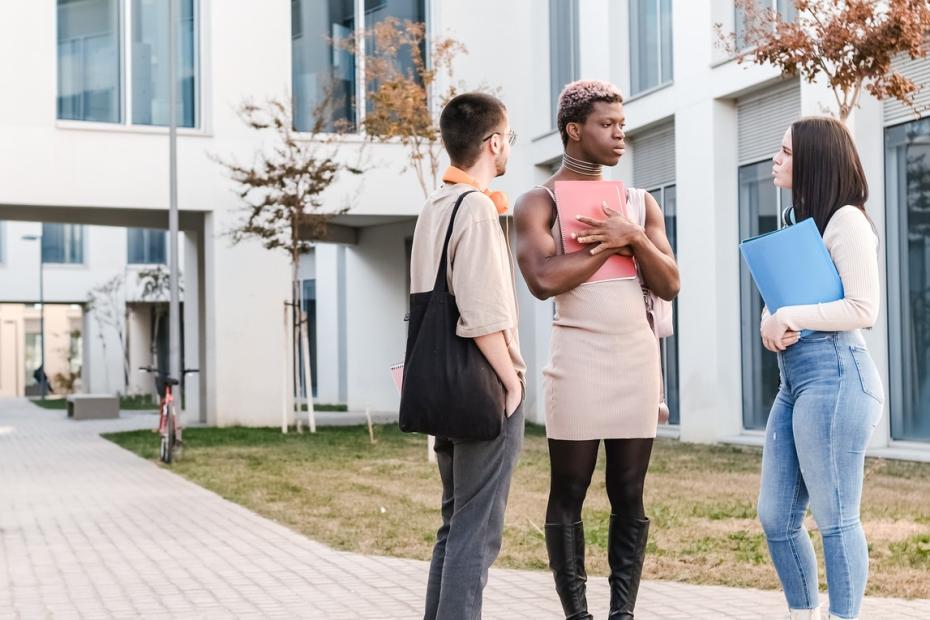
Steps to promote LGBTQ+ students’ well-being on campus
What can universities do to promote greater LGBTQ+ student well-being and positive academic outcomes? Kristen A. Renn provides some answers

You may also like
Popular resources
Even before the pandemic, post-secondary education had turned attention to student well-being in academic, social and personal domains. Researchers and educators promote students’ health, happiness and sense of belonging as contributors to well-being and success in college.
Not all students experience campus climates that foster well-being, evidence shows, with students minoritised by race, ethnicity, gender, sexual orientation and religion, among others, faring poorly in comparison with majoritised peers.
Minoritised students navigate environments ranging from national and state laws that aggressively limit their rights to the day-to-day micro-aggressions that undermine their well-being and sense of belonging.
The experience on campus of LGBTQ+ students – individuals identifying on the queer and/or trans spectrum – can have negative consequences on their well-being and post-secondary outcomes, decades of research shows. But colleges and universities can take steps to improve the institutional climate and LGBTQ+ student outcomes, studies also show.
It is important to recognise that every student has multiple intersecting identities and lived experiences. Any strategies designed to support LGBTQ+ students need to be considered alongside actions to support other minority groups as part of an overall joined-up approach to improving student well-being.
- Five simple ways to make your classroom more LGBTIQ+ friendly
- Creating a university environment where staff and students feel comfortable sharing their pronouns
- Supporting LGBTQ+ aspiring leaders in universities
Assess the campus climate
Understanding how LGBTQ+ students experience your campus is a first step in improving the environment. Whether through a climate survey sent to all students and disaggregated by gender identity, sexual orientation, race and other characteristics of interest, or a survey aimed specifically at LGBTQ+ students, assessment provides baseline information before improvements are made and data to inform priority strategies. You might want to use one of the empirically validated survey instruments or create your own. Campuses can augment their surveys with interviews, focus groups or speak-outs and visual tools such as heat maps through which students convey their experiences. Insight gleaned from such studies can inform steps to improve LGBTQ+ student experiences.
Audit campus policies
Alongside a campus climate assessment, a policy audit can identify improvements to promote well-being. In an equity-focused audit, teams responsible for different campus units (such as the registrar, campus housing, health services, admissions) should go through their operating policies and practices, including examining forms, data aggregation practices and reporting, to look for instances in which LGBTQ+ students are treated differently from their peers, not taken into consideration or made invisible.
One example is university student health insurance, which often does not include transition-related care for transgender students. There are varied schools of thought on the wisdom of collecting information on sexual orientation and gender identity on applications and other institutional forms, but the frequent lack of options outside “female” or “male” for reporting sex (sometimes mislabelled as gender) conveys an expectation that there are only two options and everyone must pick one of them. Policies related to gender-segregated facilities (student housing, restrooms, locker rooms) and activities (sports, some student clubs such as fraternities and sororities) are another example of how implicit heterosexism and cis-genderism constrain institutional environments.
Support LGBTQ+ individuals
Changing the climate and aligning campus policies takes time. Meanwhile, students are living and learning in the existing environment. Consider ways to support individual LGBTQ+ students while larger long-term improvements are under way. For example, making sure that student services, including career centres, health clinics and counselling centres, provide LGBTQ+-friendly support and programmes. And, where needed, providing LGBTQ+ students with access to emergency financial support. Attention to individual students’ multiple intersecting identities is especially important when considering how to support them. Partner with campus allies around race, ethnicity, gender and disability to facilitate this multi-factored support.
Engage LGBTQ+ communities
LGBTQ+ community groups and activists have long offered recommendations for improving education for LGBTQ+ students. When designing campus climate assessments, doing policy audits or anticipating how to support individuals, it is important to engage LGBTQ+ communities on and off campus. There is expertise among LGBTQ+ students, faculty, staff and community partners that should be leveraged to improve well-being.
Address teaching and learning spaces
Learning spaces – classrooms, online spaces, labs, internships, study abroad – are critically important as spaces of inclusion or exclusion, students report. Curriculum, pedagogy and instruction open opportunities to introduce all students, not only LGBTQ+ students, to topics related to sexual orientation and gender diversity. They also open opportunities for micro- and macro-aggressions that interfere with the learning process and push LGBTQ+ students out of some fields.
LGBTQ+ students report hearing disparaging comments about LGBTQ+ people, having to defend themselves from verbal abuse and being excluded from study groups and other learning activities as common occurrences. Educators should be alert to what happens in the classroom and make it clear that discriminatory behaviour will be addressed. Educators must intervene to interrupt micro-aggressions and support LGBTQ+ students who experience them.
At a time when LGBTQ+ students around the world face a shifting patchwork of local, regional and national climates that range from supportive to antagonistic, higher education institutions can play a vital role in promoting student well-being and facilitating positive outcomes. Addressing policies, supporting individuals, engaging communities and promoting inclusion in teaching and learning spaces are key strategies to doing so.
Kristen A. Renn is a professor of higher, adult and lifelong education, Mildred B. Erickson distinguished chair and associate dean of undergraduate studies for student success research at Michigan State University.
If you found this interesting and want advice and insight from academics and university staff delivered direct to your inbox each week, sign up for the Campus newsletter.



Comments (0)
or in order to add a comment